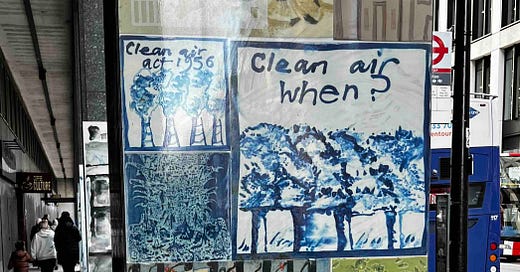Nobody would argue that we should protect children from the effects of air pollution. But at the same time, schools and the communities around them are causing some of the spikes in pollution that are affecting everyone. We decided to delve into these issues.
Solve the school run
This is an excellent new initiative from one of our Breathe London fellow participants, Nicola Pastore, and her team. Solve the school run is campaigning to reduce traffic during school run times. We have seen in our own data analysis that pollution rates jump up when schools go back at the start of term. Nicola’s team has put together a wealth of data to support their work. They have found that a quarter of pupils in London are driven to primary school, which equates to almost a quarter of a million more cars on the road.
Initiatives across the capital to set up school streets will also help tackle this. It should discourage parents from driving at all, but at the least will require parents (unless they have an exemption) to park further away and walk the last bit. Even this change in behaviour will reduce pollution directly around the school, not to mention road safety for children. We’ve covered Lambeth’s plan for widespread roll out of this programme and can’t wait to see the improvements.
Meanwhile, the Mayor of London has announced 200 indoor filters for London schools. There is not much more detail in the announcement but we assume it builds on the findings of the excellent SAMHE (Schools’ Air quality Monitoring for Health and Education) initiative. SAMHE is establishing a network of air quality monitors in schools across the UK, to generate data to will help researchers. We’d love it if schools’ indoor and outdoor air quality initiatives were more coordinated though!
Inequity in the capital
The inequity of air pollution is brought home strongly in this work from the Education Policy Institute. Two findings stood out: almost all schools are located in areas that have annual average concentrations of pollutants in excess of World Health Organisation guidelines; and there is an association between school level deprivation and the concentrations of pollution in the local area. We also found that Lambeth schools were towards the high end, particularly for nitrogen dioxide.
Nitrogen dioxide is particularly damaging for children, leading to increasing rates of childhood asthma, sometimes with devastating consequences. The American Lung Association has just published some work setting out that a transition to electric vehicles and clean power would prevent 2.7 million asthma attacks in children. That’s something worth paying for.
In Louise’s day job she surveyed families about their views and experiences of air pollution. The messages were clear: high levels of concern but low levels of information to help parents and carers manage it. We hope to help! Do read the full article and leave your thoughts.







Another great one! And wonderful to see you linking up with Nicola and her inspiring work! 🙌
Another great one! And wonderful to see you linking up with Nicola and her inspiring work! 🙌